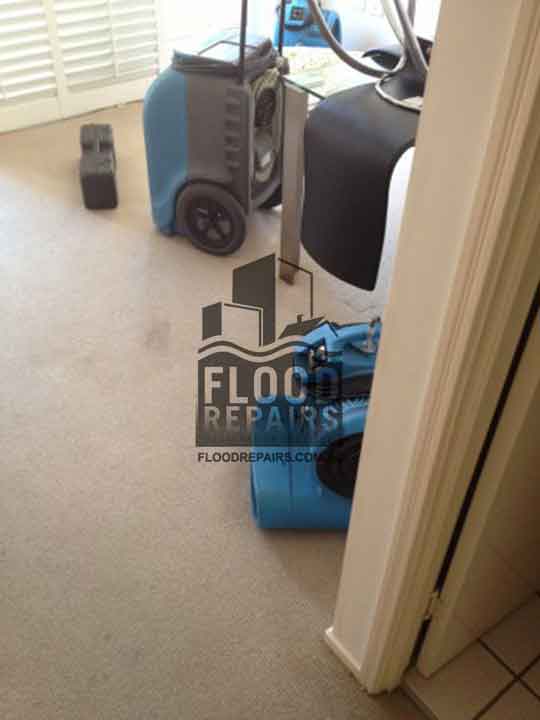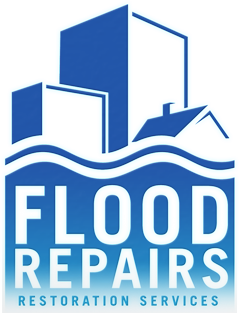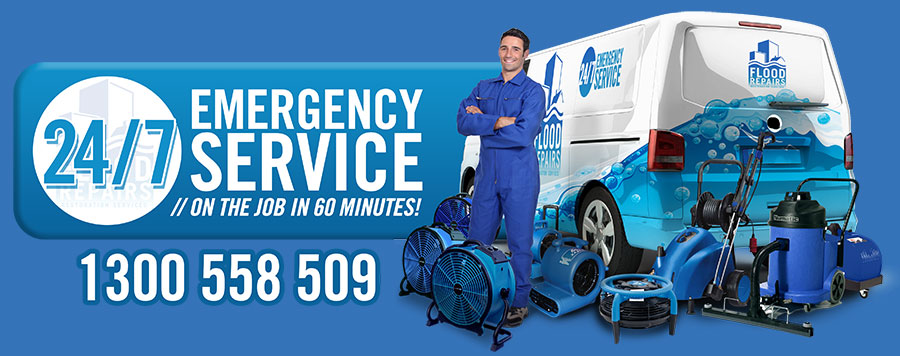- Carpet Drying Tips
- Flood Restoration
- Wet Carpet
- Carpet Drying
- Water Extraction
- Water Damage Repair
- Flood Damage Repair
- Carpet Water Damage
- Wet Carpet Cleaning
- Wet Timber Drying
- Water Damage Restoration
- Sewage Water Cleanup
- Vapour Steam Cleaning
- Carpet Steam Cleaning
- Flood Help
- Tile & Grout Cleaning
- Odour Removal and Bacteria Cleaning
- Structural Dehumidification and Drying
- Mould Inspection
- Mould Remediation
- Air Conditioning Mould Removal
- Deodorising and Disinfection
- Carpet Repair and Installation
- Blower and Equipment Rental
- Emergency Response
- Insurance Assessment Report
- Carpet Drying Tips
- Flood Restoration
- Wet Carpet
- Carpet Drying
- Water Extraction
- Water Damage Repair
- Flood Damage Repair
- Carpet Water Damage
- Wet Carpet Cleaning
- Wet Timber Drying
- Water Damage Restoration
- Sewage Water Cleanup
- Vapour Steam Cleaning
- Carpet Steam Cleaning
- Flood Help
- Tile & Grout Cleaning
- Odour Removal and Bacteria Cleaning
- Structural Dehumidification and Drying
- Mould Inspection
- Mould Remediation
- Air Conditioning Mould Removal
- Deodorising and Disinfection
- Carpet Repair and Installation
- Blower and Equipment Rental
- Emergency Response
- Insurance Assessment Report
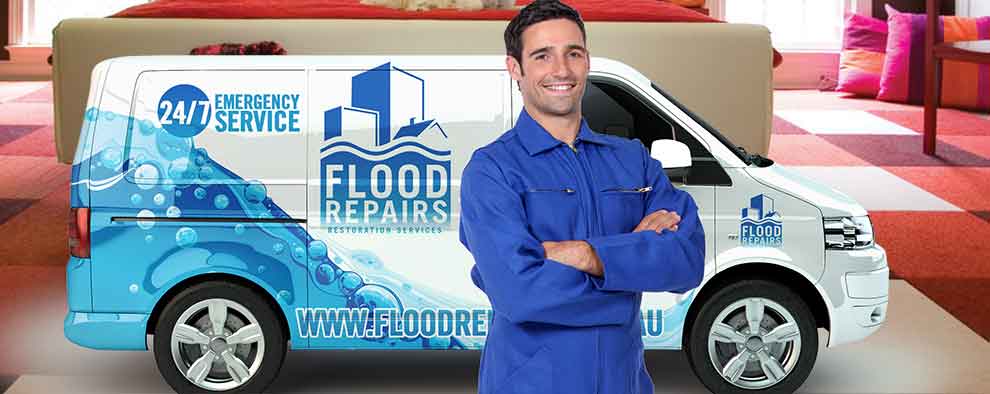
- Home »
- Carpet Drying Tips
Carpet Drying Tips

Flood damage in your home can be scary and potentially one of the most significant disasters your property will ever face. Your home may have been damaged by a freak storm, damaged pipes, faulty plumbing or perhaps an overflowing dishwasher or burst washing machine hose. From excess rain to a broken pipe, flooding can wreak havoc on your home and belongings as well as create potential health risks to you and your family.
FloodRepairs professionals understand how devastating it can be to go through a situation like this, and we are available around the clock to help restore your home or office to an inhabitable state. Call us now on 1300 558 509.
These are some important steps to take as soon as you detect flood damage:
- Remain calm so your thinking stays clear.
- Call FloodRepairs on 1300 558 509.
- Close the water main if possible or shut off any water source so flooding stops
- Shut down the electrical breaker in damaged areas before unplugging or removing any electrical devices from the wet carpet or submerged areas.
- Put aluminium foil under legs or feet of any furniture in contact with wet carpet or water to prevent permanent staining
- Lift any curtains or draperies away from wet carpet or water.
- Lift and tack up any upholstered furniture skirts.
- Remove books, papers, fabrics, shoes, potted plants or other items that are able to stain wet carpet.
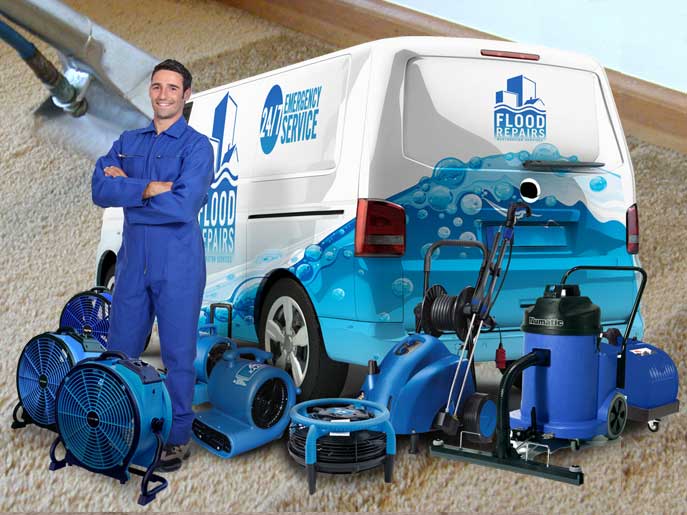
Avoid doing these things:
- Using your vacuum cleaner – electrical shock can result, as well as damage to the equipment.
- Placing newspaper in traffic areas to walk on – newspaper ink transfers easily to wet carpet fibres which results in permanent staining.
- Walk on carpet any more than necessary – this keeps damage from spreading to unaffected areas.

Types of Water Damage:
When evaluating the types of water damage and how they affect an emergency water removal situation it helps to know that water losses fall into three categories: clean water, grey water and black water. Once these categories are determined, it is easier to introduce the proper drying techniques, and it helps to designate what items can and cannot be restored. Here’s some specific information about the three types of water losses.
Category 1: Clean Water
This water originates from a source that does not pose substantial harm to humans. It may include broken water supply lines, sink overflows with no contaminants, appliance malfunctions involving water supply lines, falling rain water, broken toilet tanks, and toilet bowls that do not contain contaminants or additives. If left untreated for 72 hours, Category 1 water becomes Category 2 water. This further enforces the fact that reaction time is a key factor when dealing with the various types of water damage.
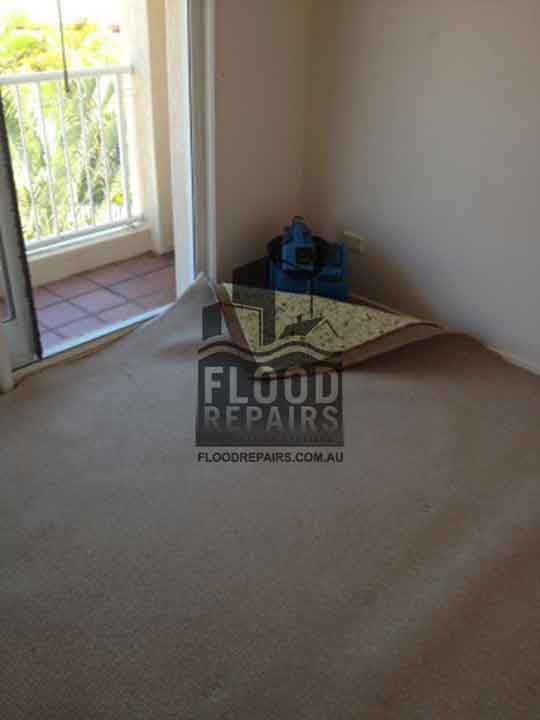
Category 2: Grey Water
Grey water contains a significant level of contamination. If humans consume this water, it has the potential to cause discomfort or illness. Category 2 water carries micro-organisms and nutrients for micro-organisms. Sources may include discharge or overflows from dishwashers, washing machines or toilet bowls (with some urine but no faeces); sump-pump failures; seepage due to hydrostatic pressure; and broken aquariums.
Gray water may contain chemicals, bio-contaminants and other forms of contamination, including physical hazards, and is not suitable for consumption. Carpet pads affected with Category 2 water must be removed and disposed of properly. Even carpet that is salvaged must be cleaned with hot-water extraction. If left untreated, Category 2 water becomes Category 3 water in 48 hours or less.
Category 3: Black Water
Category 3 water includes sewage and other contaminated water sources that enter or affect the indoor environment. Sources could range from toilet back-flows that originate beyond the toilet trap to all forms of flooding from sea water, ground surface water, and rising water from rivers and streams. These types of water carry silt and organic matter into structures and create black water conditions. Whenever a sewage back-flow occurs, the health of anyone in the vicinity should be the primary concern. Always remove and properly dispose of carpet and padding that has been affected by a Category 3 water loss.
When it comes to different types of water damage, the experts at FloodRepairs can help you evaluate the various types of water loss and how they should be treated . Put your trust in the experienced professionals. Call FloodRepairs on 1300 558 509
